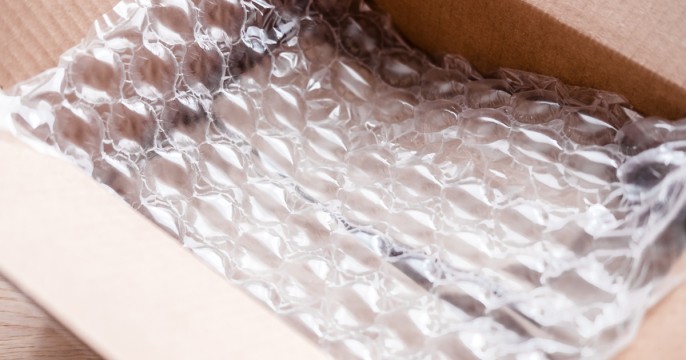Here at Springpack we know the importance of protecting your goods during transit. So we’ve decided to explore the benefits of two of the most commonly used packaging materials; Bubble wrap and Foam. Both are great for protecting products and holding them in place. Both do their job without adding unnecessary weight to the package. But which is better?
Making the right selection can have a significant impact on the efficiency of your operation. Here’s our guide on how to select the right material for your needs!
Bubble Wrap
How it works:
Bubble Wrap contains hundreds of air filled pockets which are encased within layers of polyethylene. These bubbles of air suspend the product in the box, acting as a soft cushion barrier that absorbs shock in the event of unexpected movement and therefore prevents damage.
Main benefits:
It’s extremely lightweight which means it’s easy to use in the warehouse and can reduce shipping costs. Providing excellent all-round protection, the highly versatile Bubble Wrap is available in several different types, most commonly in rolls which are easily cut to length and prevents excess material being wasted. Also available in an anti-static version, which is ideal for packaging electronics as it won’t produce electrostatic charges.
What it’s best for:
This material can be used for a number of applications depending on the thickness, for example, standard Bubble Wrap is great for protecting light to medium products and premium Bubble Wrap for packing fragile or very heavy items. Bubble Wrap is especially effective in the wrapping of fragile items, providing the soft cushioning that’s needed.
What it doesn’t work well for:
Bubble Wrap isn’t necessarily suitable for wrapping polished. There is a risk of it leaving small cell marks that are difficult to remove. Items constructed using polished metal, glass or wood are all susceptible to this. It might be best to select an alternative protective material for products made of these materials.
Foam
How it works:
Foam consists of tiny air cells packed tightly together, which provide excellent cushioning and give the material bounce. It is both lighter and thinner than Bubble Wrap and also takes up less space on site and within cartons.
Main benefits:
For such a lightweight and thin material, foam offers astounding protection. In particular against rubbing and scuffing. It is also lint and dust free.
Packaging foam can be reused time and time again too. It also retains its ‘bounce’ and protective qualities throughout several uses, which could save you money!
As well as foam sheets, you can use foam corners and edge protectors. They all act as a buffer between the product and the box. Foam is easy to cut to size too. It is easily handled and is available in a variety of thicknesses.
What it’s best for:
Foam is entirely non-abrasive. This means it will not scratch or leave any marks. It’s perfect for wrapping polished and shiny items like metal, glass or polished wood.
It also provides thermal insulation to protect items that are temperature sensitive. It’s less likely to build static electricity than Bubble Wrap, which means it’s better suited to packing electrical equipment.
Why not combine them?
For the ultimate product protection, you could combine these two materials. Imagine the shock-absorbing cushion of bubble with the non-abrasive properties of foam!

Get in touch today, fill out our enquiry form below








